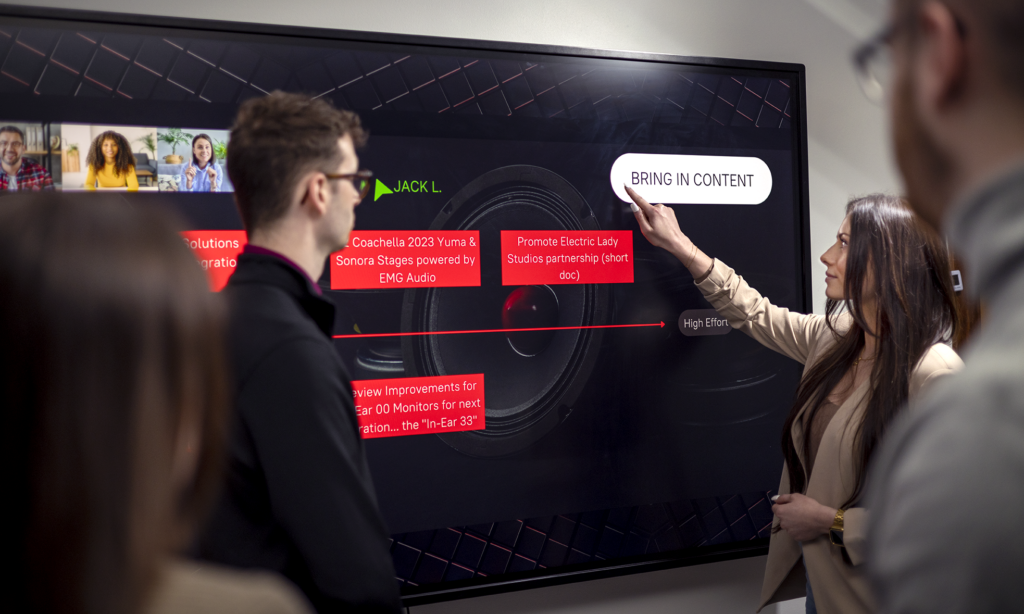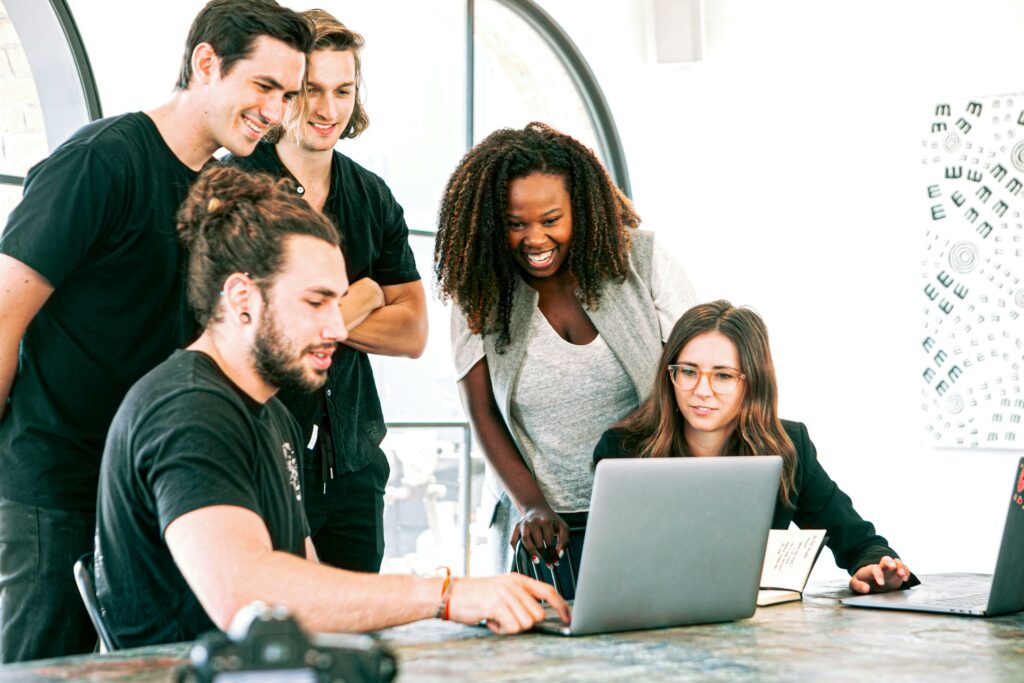If you have undergone any form of education or are active in the workforce, you are probably familiar with facilitation. Most people at some point in their lives, have facilitated or presented to an audience at least once. If you don’t think you have, you most certainly have been the subject of facilitation or presentation.
Facilitation and Presentation
Before diving into the evolution and intersections of facilitation, let’s lay the framework for this conversation by providing context around the main methods human beings share information.
So what is facilitation? The Association for Talent Development puts it this way, “Facilitation is the act of engaging participants in creating, discovering, and applying learning insights. In contrast to presentation, which is typically characterized by a ‘sage on the stage’ delivering content to an audience, facilitation usually involves a ‘guide on the side’”.
The world has become increasingly connected through technological advances in the 2000s, revolutionizing how we learn and communicate. This shift has ultimately led to a noteworthy convergence of facilitation and presentation. Let’s take a closer look at the evolution of facilitation to understand where we are heading and examine the tools propelling us into the future of information exchange.
Through the Years
Facilitation (Pre- 2000s)
- Top-Down: During this era, facilitators solely directed the means and methods information was shared with an audience.
- Linear: Meetings and workshops typically followed a structured agenda, with no room for participant feedback.
- A Focus on Content Delivery: Leaders and facilitators were concerned with the dissemination of information as opposed to the absorption of information.
- Minimal Technological Integration: Due to development and access, technology was used minimally to support facilitation. Whiteboards and overhead projectors were the most common technologies used.
Facilitation (2000s-2010s)
- Collaboration Integration: Facilitators began to create opportunities for collaboration, encouraging engagement to gauge and deepen understanding.
- Incorporation of Interactive Techniques: Facilitators incorporated icebreakers, brainstorming sessions, and activities to foster creativity through the learning process.
- Implementation of Digital Tools: Email and other basic software applications were leveraged to vary facilitation. At this time, platforms such as Microsoft PowerPoint enabled users with limited experience to create presentations to share in-person, via email, or through a video conferencing platform such as Skype.
Facilitation (2010s-2020s)
- Emphasis on Inclusivity and Diversity: Facilitation practices became increasingly aware of inclusivity, diversity, and equity to ensure all voices were heard during meetings and workshops.
- Agile and Adaptive Approaches: Facilitators used techniques to allow meeting structures and agendas to change on a need basis.
- Integration of Design Thinking and Innovation: Facilitation practices began to implement design thinking and employ iterative processes throughout learning experiences.
- Expansion of Digital Tools: Further development of video conferencing platforms and digital whiteboards like Miro began to shift the tide. Oblong and Multitaction became prominent for offering improved interactive visual collaboration solutions. In addition, Microsoft Teams, Google Meet, and Zoom were advancing facilitation through dynamic communication and video conferencing. In educational, enterprise, and federal spaces, leaders realized the importance of digital interaction to drive high-value outcomes.
Concluding this era, the COVID-19 pandemic had a devastating global and cultural impact on humanity, bringing the world to a halt. Isolation forced us to reconfigure several aspects of our lives, including how we worked. A study published by Stanford University found that before the COVID-19 pandemic, only 5% of working days were spent at home. During the pandemic, remote work rose to 40%. New means of work quickly arose to ensure the continuity of business operations. Experts projected the percentage of remote work to drop post-pandemic. However, remote work stuck around years later due to a notable paradigm shift. A societal longing for human connection and work/life balance would fuel the widespread adoption of digital tools that would overcome hybrid facilitation challenges ultimately, propelling us into the future.
Facilitation 4.0 (2020s-Beyond)
- Human-Centered Design: Facilitation has shifted its focus around human-centered design principles, prioritizing participant experience, co-creation, and empathy when building meetings and workshops
- A Holistic Approach to Collaboration: Merging both in-room, hybrid, and virtual facets of collaboration to offer an accommodating learning experience has become the new standard.
- AI and Automation Integration: Artificial intelligence integration and automation to streamline facilitation processes (from data analysis to ideation) are increasingly common.
- An Emphasis on Sustaining Engagement: Facilitation 4.0 promotes environmental consciousness and well-being in meetings and workshops.
- Continuous Iteration: The current and future state of facilitation welcomes adaptation, encouraging facilitators to iterate on their practices based on feedback, new findings, organizational behavior, and emerging technology trends.
The Progression of Facilitation
Facilitation 4.0 is a result of technological advancements and a paradigm shift towards inclusivity, introducing a cyclical form of information exchange. Today, facilitation invites participants to take part in the process of knowledge impartment, ultimately shaping it. Cutting-edge visual collaboration software urges facilitators to adopt a deep commitment to human-centered design, collaboration, and sustainability for better information exchange.

Innovations like Alleo are the champions of Facilitation 4.0, simplifying deep collaboration. Alleo supports the future of facilitation by allowing users to launch immersive hybrid collaboration experiences from a single browser tab. Alleo is accessible using any device, anywhere. Whether you aim to host dynamic hybrid workshops or present content on multiple displays for an in-room audience, our platform accommodates a variety of use cases.
Forward-thinking platforms should support continuous iteration and allow leaders to use their facilitation and presentation methodologies. Alleo’s infinite virtual visual canvas enables users to create an intuitive, user-specific interface and experience to enhance collaboration. Alleo is compatible with your current software/hardware setup irrespective of display size, aspect ratio, or resolution, and offers an array of powerful integrations with leading software providers (ex; Microsoft Teams, Google Meet, Zoom, Webex, and more.
Our software has always embodied a holistic approach to information exchange. See and understand the big picture by bringing together all types of content in one place (vs. toggling between apps), from live video, applications, and data to screen shares, documents, embeds, and more. Simultaneously drive engagement with our native tools for whiteboarding or our widgets for polling, and voting.
We firmly believe a visual collaboration solution should cater to your exact needs. We take human-centered design seriously by allowing user feedback to influence further development of our product, which we update regularly with enhancements and new features. Ready to create, connect, and interact in real-time like never before?
For years, Fortune 500 companies have chosen Alleo to build community and deploy seamless hybrid experiences that unify audiences, elevate engagement, and create memorable experiences. Innovate with us today!




